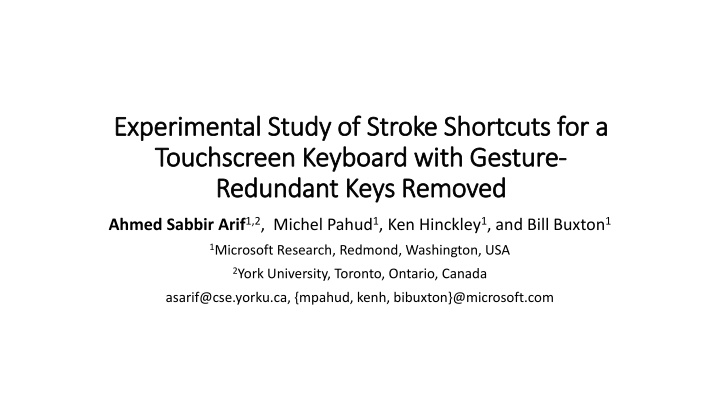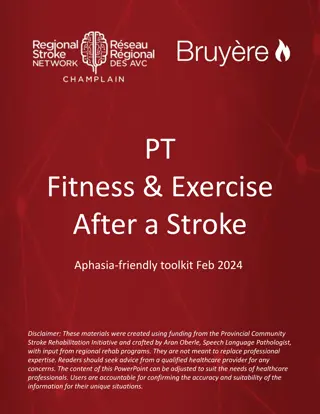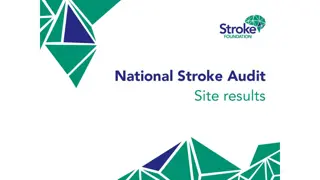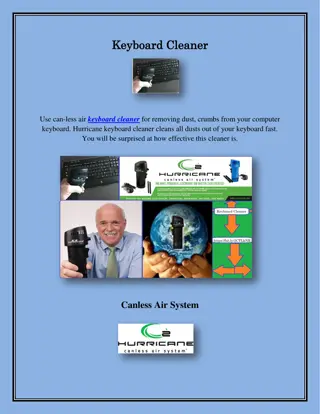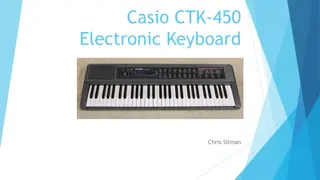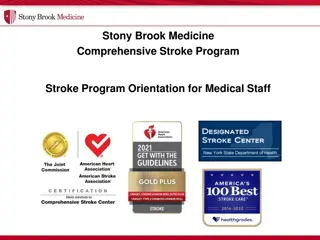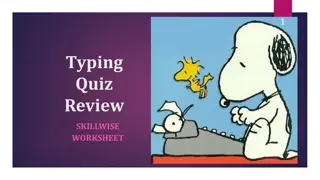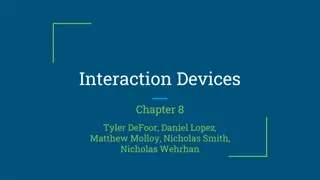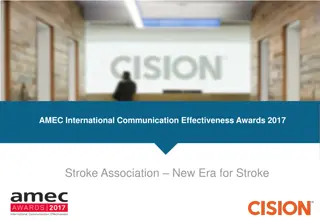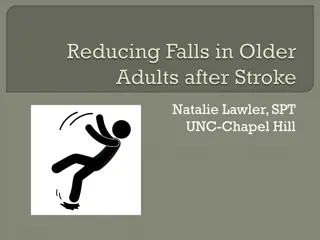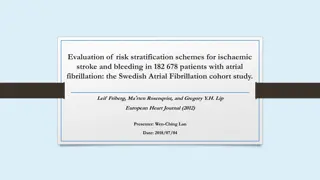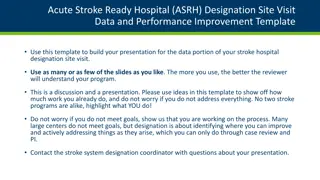Experimental Study of Stroke Shortcuts for Touchscreen Keyboard with Gesture
The study focuses on optimizing typing efficiency by removing redundant keys from touchscreen keyboards and introducing stroke shortcuts. It includes user feedback, performance analysis, and comparisons between different keyboard variants. The approach involves replacing keys with gestures to enhance usability and speed.
Download Presentation

Please find below an Image/Link to download the presentation.
The content on the website is provided AS IS for your information and personal use only. It may not be sold, licensed, or shared on other websites without obtaining consent from the author.If you encounter any issues during the download, it is possible that the publisher has removed the file from their server.
You are allowed to download the files provided on this website for personal or commercial use, subject to the condition that they are used lawfully. All files are the property of their respective owners.
The content on the website is provided AS IS for your information and personal use only. It may not be sold, licensed, or shared on other websites without obtaining consent from the author.
E N D
Presentation Transcript
Experimental Study of Stroke Shortcuts for a Experimental Study of Stroke Shortcuts for a Touchscreen Keyboard with Gesture Touchscreen Keyboard with Gesture- - Redundant Keys Removed Redundant Keys Removed Ahmed Sabbir Arif1,2, Michel Pahud1, Ken Hinckley1, and Bill Buxton1 1Microsoft Research, Redmond, Washington, USA 2York University, Toronto, Ontario, Canada asarif@cse.yorku.ca, {mpahud, kenh, bibuxton}@microsoft.com
Example Phrase: typing M3J 1L4 M3J 1L4 (my postal code)
Example Phrase: typing M3J 1L4 M3J 1L4 (my postal code)
Example Phrase: typing M3J 1L4 M3J 1L4 (my postal code)
Example Phrase: typing M3J 1L4 M3J 1L4 (my postal code)
Example Phrase: typing M3J 1L4 M3J 1L4 (my postal code)
Special Characters 1+ layouts for symbols 7
Our Approach Replace some keys with gestures 8
The New Keyboard with stroke shortcuts! q w q w Q w q w q w BACKSPACE ENTER SPACE SHIFT q w
2 Studies Study 1 Is it beneficial to remove the gesture redundant keys? Study 2 Performance Immediate usability User feedback 11
Three Variants 1. Default 2. Default + Strokes 3. Removed + Strokes new 12
Two Phrases Sets Regular MacKenzie-Soukoreff Mixed 7% uppercase 10% numeric 7% symbols Remaining 76% lowercase & spaces Uses a simple language model Created meaningful phrases with random address, names, phone numbers, etc. E.g. Myson s phone numberis +1 (638) 283-9375 13
Study 1 Within-subjects 14 participants (23-49 years, avg. 32) 2 techniques (Default+Strokes, new, counterbalanced) 3 blocks 10 phrases (5 regular, 5 mixed, randomized) = 840 phrases Placed on table Used both hands 10 fingers Correction recommended 14
Results New Entry speed (WPM) significantly higher Error rate (TER, ER) not significant 19% fewer OPC significant Users did not complain the gestures were really intuitive once I got a hold of the gestures my typing got really fast Default+Strokes 28% gesture use (4%-58%) No significant difference between user groups 15
Study 2 Between-subjects New 10 users, 19-49 yrs. (avg. 39) Default 10 users, 26-44 yrs. (avg. 34) 2 conditions (Regular, Mixed) 3 blocks 15 phrases (+2 practice) = 1,800 phrases per group ( practice) 16
Entry Speed Mixed phrases significantly faster 20% increase (17% overall) Regular phrases no difference (~20% wpm with both) 17
Error Rate & OPC ER and TER no significant difference Higher entry speed was not at the cost of accuracy No effect of block OPC significant difference For mixed phrases reduced by 15% For regular comparable (~1.3 with both) No effect of block 18
Round Trip 8% keystrokes to switch between keyboards Keyboard switching 2+ sec. round trip Shift to check additional layouts Difficult to learn Shift, Space, Enter, BKSP (more for new) Del additional chars in proportion to stroke length 19
Qualitative Data Default KB 40% 50% New KB 80% 90% p < .05 < .05 Preference Willingness to use 80% thought typing was faster for regular text 80% complained about accidental strokes (ER) The keyboard was more responsive than my normal tablet keyboard I liked that I could apply the gestures without moving my fingers I liked the fact that you don t have to swap between different KBs to enter special characters 20
Further Discussion Typing rhythm Both studies: Tablet On table Both hands Final study expert users If better results yielded with this, should be with One hand, two thumb, index finger When held with one hand On mobile phone 21
Future Work Longitudinal study Text editing Augmenting with shape-writing Smartphone variations Physical KB [CHI 2014] 22
Q&A Thank you for your attention My next presentation is on Friday, May 9 at Session # 9 Redmond, Washington, USA 23
